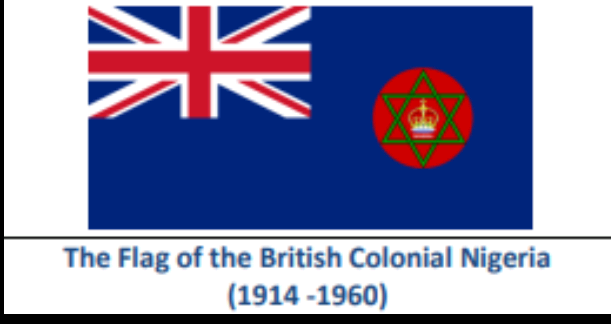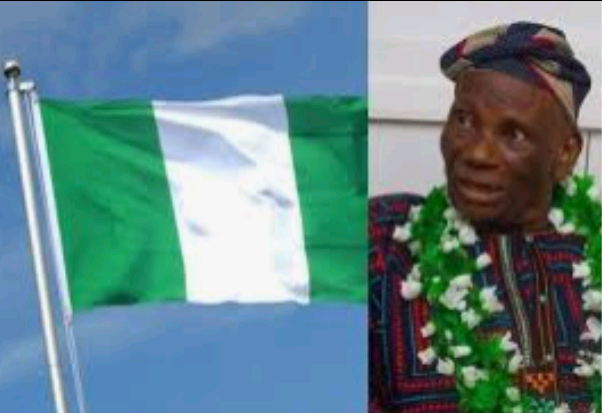You might be curious about the history behind Nigeria’s flag, or even the reason for its apparent simplicity. Of all the nations across the globe, Nigeria’s flag remains one of the simplest in design. And yet it has a strong and meaningful symbolism.
The Nigerian flag is a simplistic alternation of three vertical stripes – an alternation of green-white-green we are already very familiar with. Its creation is credited to Pa Michael Akinwunmi OFR, who was a student at that time (now a retired civil servant). It has long become a symbol of national unity and shared aspirations in the midst of diversity.
While the green symbolizes Nigeria’s agriculture and natural endowments, the white represents national unity and peace. Let’s go down history lane to rediscover why and how the simple green-white-green design was chosen as one of Nigeria’s national symbols.
Pre-Colonial Nigeria Had No Flag
Between the 15th and 18th Centuries, European explorers, missionaries, and the British government discovered and settled in what is today Nigeria. Quite notably, there were several ancient tribes, kingdoms, and native states with strong, distinct identities already existing in the area. A number of migrations, conflicts, and usurpation of lands also took place.
Clearly there could have been individual cultural symbols for each ethnic group. But the multiplicity of ethnic identities struggled to cohabit with one another as neighbours. Even more, many of these tribal groups struggled to respect or accept the existence of one another. Thus, there could never be such a thing as a common emblem or flag.
And from the late 17th century, trading activities between the British government and natives (who operated along the coasts of southern Nigeria) had begun. The most notable activity at that time was the infamous exchange of slaves for other valuables (the trans-Atlantic slave trade). None of these tribal groups had a distinct national flag worth mentioning. And there could not be any common national symbols – particularly while inter-tribal wars were ongoing.
The Flag of the Protectorate of Nigeria
But sometime in the early 1800s, the British government gained control of large portions of what became the present-day Nigeria. Thus, these contiguous lands were acquired as British protectorates. In 1870, a royal blue flag with the British Jack, an elephant, palm tree, and green mountains inscribed in it was adopted as the common flag of British West Africa.
By the time the British government took over the Niger Delta area in 1884, the flag was slightly changed. It displayed the symbol of the Oil Rivers Protectorate to the right of the blue flag (still showing the Union Jack). The flag of Northern Nigeria had a red circle in it; while that of Southern Nigeria had a white circle.
In 1914, the Northern and Southern Protectorates of Nigeria were unified into what became the Colony and Protectorate of Nigeria. Frederick D. Lugard was chosen to be the Governor-general of the unified region. Thus, Lugard decided to create a common emblem that was inscribed into s unified national flag. The Union Jack to the top left corner of a royal blue background persisted. But now it had a green six-pointed star (Seal of Solomon) within a red circle, inserted to the right. The British crown with the name ‘Nigeria’ was inscribed in the centre of the star.


Nigeria’s Flag After Independence
Between 1958 and 1959, as Nigeria approached its Independence, a national planning committee was set up. The committee created a competition to select a design for Nigeria’s flag, following its Independence. An estimated 3,000 designs were reportedly submitted. However, one design eventually made the list. It was that of Michael Taiwo Akinwunmi, then a 23-year old student of Electrical Engineering in Norwood Technical College, London.
The original design had the green-white-green vertical stripes, with a red burning sun inscribed in the middle of the white stripe. The red sun symbolized divine guidance and protection. However, the planning committee decided to remove the quarter sun. This was partly due to the desire to maintain cultural neutrality. The symbol (or any symbol at all) might possibly honour certain religious and ethnic groups and offend others. There was need to avoid rancor. Thus, the green-white-green flag was unveiled on Nigeria’s Independence day, 1st of October 1960.
Nigeria’s National Symbols
Today, the national symbols of Nigeria include Nigeria’s flag, the Coat of Arms, the National Anthem, and the National Pledge. Here are some interesting facts you should know about Nigeria’s flag:
- No other flag or symbol cam be placed higher than the national flag, when it is flown. This is done as a sign of respect for the sovereignty of the nation.
- As stipulated by the Flags and Coat of Arms Act, the national flag should not be flown when it gets torn, old or worn-out.
- It is a tradition to fly Nigeria’s flag ceremoniously by dawn (6:00 a.m.) and lower it slowly at dusk (6:00 p.m). This is a common practice at the various orientation camps of the National Youth Service Corps (NYSC) nationwide.
- During memorials and state funerals, the national flag is usually flown at half-mast as a sign of respect for the deceased.
- The presidential flag of Nigeria displays the Coat of Arms in the center of the white stripe.
- Finally, the national flag can only be displayed on the vehicles of notable dignitaries which include:
- The president
- Vice-president
- Senate president
- Speaker of the House of Representatives
- State and deputy governors
- Chief Justice of the Federation, and
- Other dignitaries permitted by protocol.
.








